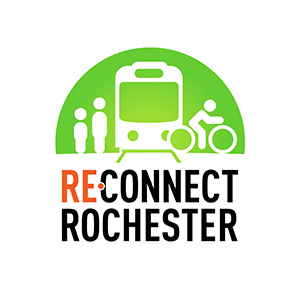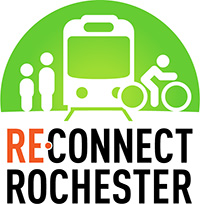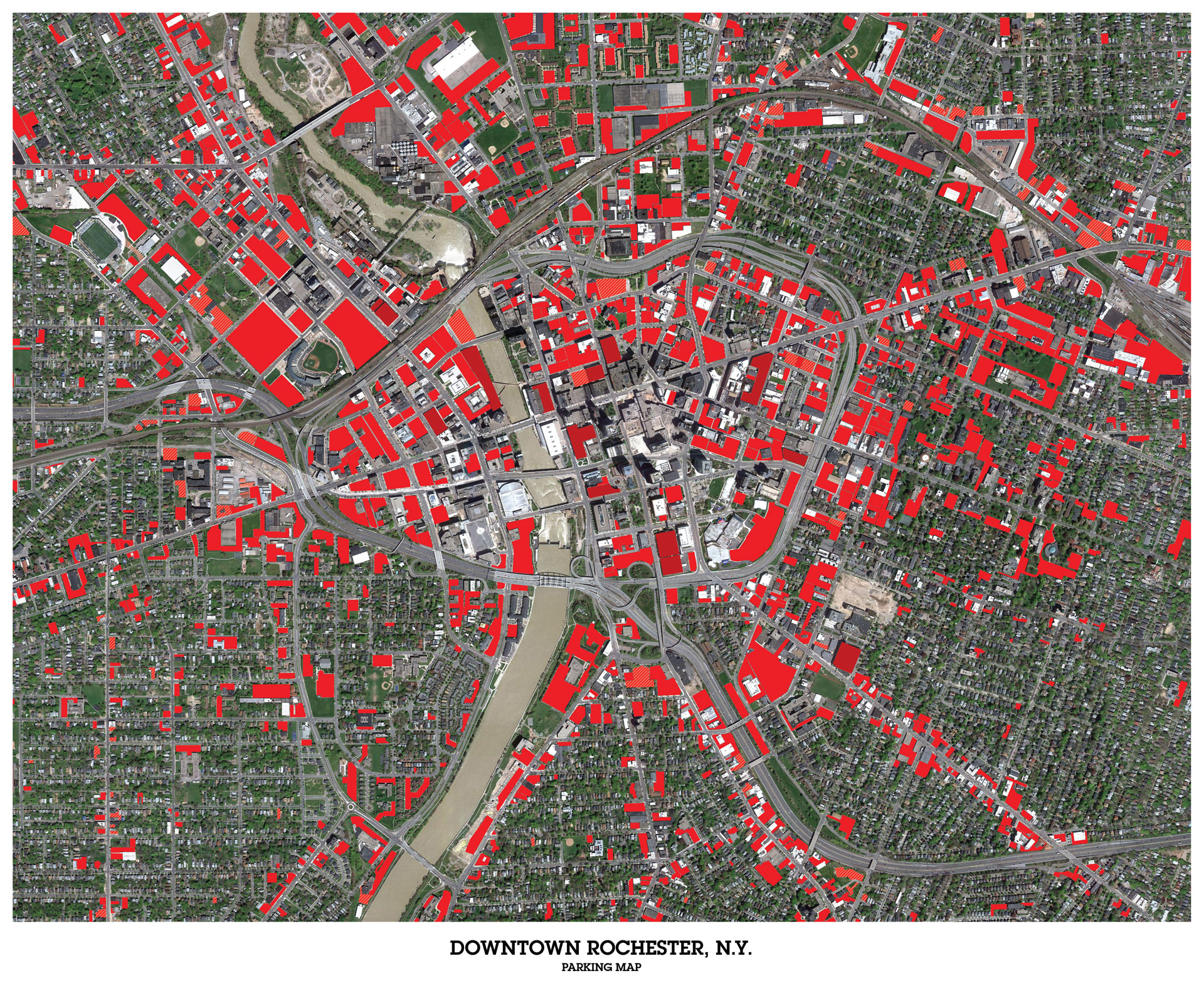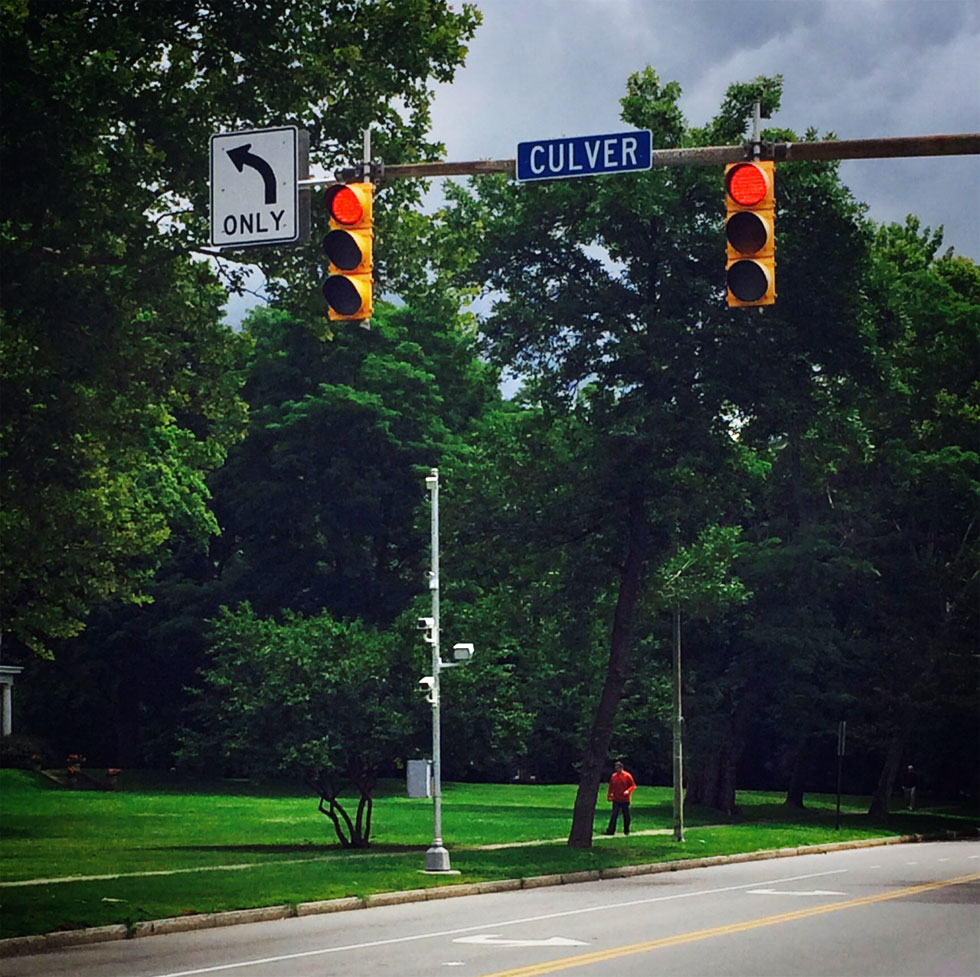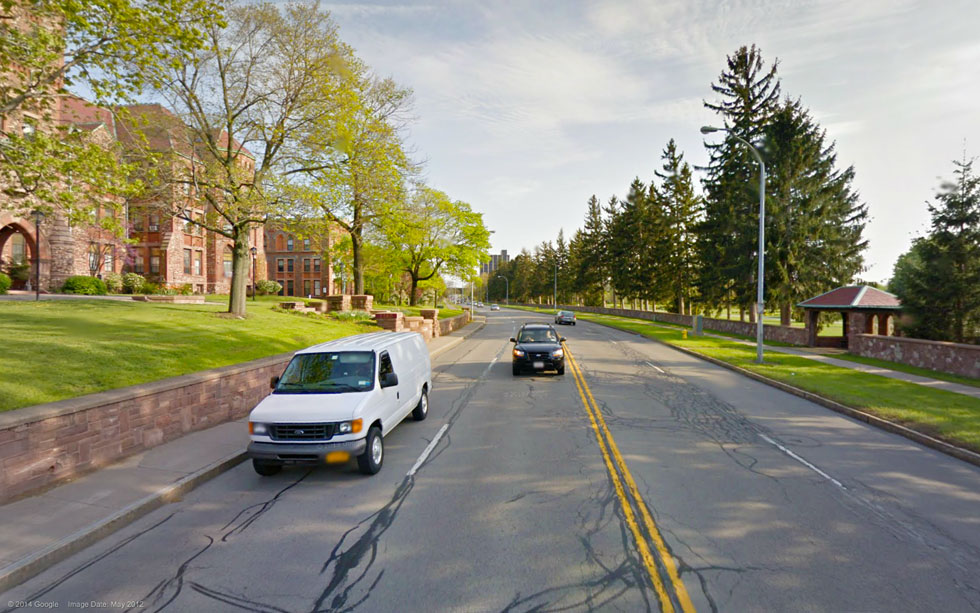This fall the City of Rochester established the first of its planned bike boulevards, routes along city streets that connect cyclists to destinations in many neighborhoods while avoiding busy intersections and heavy automobile traffic. This boulevard starts at Monroe Ave. & Canterbury Rd., heading east on Canterbury and Harvard St. It crosses the throughway via the pedestrian bridge at School 1, then follows Hillside Ave. across Winton Rd. and south to Highland Ave. Traffic signals at Culver Rd. and Monroe Ave. have been upgraded to sense bikes. Check it out for yourself! A few photos are below.





Featured Cyclist: Robert Howland (and Eleanor)

Today we begin a series of posts featuring cyclists around Rochester, highlighting common interests and needs as well as the great diversity of ways cycling is a part of our community.
What are you riding?
It’s a Trek Soho-S single speed from R-Community bikes.
What’s a typical ride like for you?
I bike with my dog Eleanor Roosevelt, for exercise. We usually go about 5 miles around Goodman, Park Ave, and South Ave. I really like the High Falls area.
Why do you cycle?
Well, I started because my roommate rode all the time. He took me to R-Community bikes, and then I got my bike and started commuting to work. So it’s for exercise, for me, for my dog, for commuting. I like it. And she’s real good at it.
Anything we should know about the state of bike lanes, roads, or trails?
Yeah, I had an accident. I was right there waiting to turn left on Caroline and South Ave. I had blinking LEDs and everything, but the car just hit me, no brakes. I fell right back and hit my head. The windshield of the car was smashed, and the hood. But no broken bones, just road rash. And Eleanor was shook up but OK. No matter how safe you are or how many precautions you take there are still idiots on the road.
How do you envision the future of cycling in Rochester?
I love bicycling and I love Rochester. I see it getting a lot bigger. I just see it growing. Everyone enjoys it. Once you start doing it you realize it’s a valid form of transportation, and cheap, and fun. I like the river trail, along the Erie Canal, and the lanes going through the city. But I always wish there were more, and I don’t always feel safe in them. I’d feel a lot safer if there were concrete barriers for bike lanes.
Monroe County Millennials and alternative transportation
In a recent survey by Monroe County, young adults around Rochester listed bike lanes and walkable communities among the factors keeping them in the area. Moving forward, they asked for more bike lanes and a bike share program, pointing to easier non-automotive transit as a key enabler for living downtown. Those opinions are consistent with the findings of cities across the nation: bike infrastructure brings young professionals and jobs that can revitalize urban cores.
Mayors’ Challenge for Safer People, Safer Streets
![Crosswalk [PHOTO: Renee Stetzer]](https://reconnectrochester.org/images/photos/Crosswalk-photo.jpg)
Posted by: board member Renee Stetzer, pedestrian safety advocate and blogger at RocVille.com
In January, DOT Secretary Anthony Foxx unveiled the Safer People, Safer Streets Initiative ![]() . The goal is to address “non-motorized safety issues and help communities create safer, better connected bicycling and walking networks.” He called it the most comprehensive and forward-thinking initiative the DOT has ever put together on bike and pedestrian issues. It aims to engage transportation specialists, safety experts, leadership and the public to make streets safer for a variety of transportation options. And it recognizes the vital role biking and walking play in a reliable multimodal transportation network…
. The goal is to address “non-motorized safety issues and help communities create safer, better connected bicycling and walking networks.” He called it the most comprehensive and forward-thinking initiative the DOT has ever put together on bike and pedestrian issues. It aims to engage transportation specialists, safety experts, leadership and the public to make streets safer for a variety of transportation options. And it recognizes the vital role biking and walking play in a reliable multimodal transportation network…
Congress Introduces Safe Streets Act of 2015
![Pedestrian Sign Park Ave [PHOTO: Renee Stetzer]](https://reconnectrochester.org/images/photos/Sad-pedestrian-sign.jpg)
Posted by: board member Renee Stetzer, pedestrian safety advocate and blogger at RocVille.com
Congress introduced a bill this week that will help streets across the country become safer for all people, regardless of their mode of transportation. With bipartisan support, The Safe Streets Act of 2015![]() , was introduced by Representatives Doris Matsui (D-CA) and David Joyce (R-OH):
, was introduced by Representatives Doris Matsui (D-CA) and David Joyce (R-OH):
National Day of Advocacy Focuses on Transportation Infrastructure Funding

Story via: RTS
Today, RTS will join with the Genesee Transportation Council, and local leaders and transportation partners to participate in the American Public Transportation Association’s (APTA) nationwide Stand Up 4 Transportation Day.
RTS CEO Bill Carpenter will be joined by Monroe County Executive Maggie Brooks, James D. Hoffman, Chairman of the Wayne County Board of Supervisors and Genesee Transportation Council, and representatives from the Rochester Cycling Alliance, Reconnect Rochester, and other organizations for a rally at the RTS Transit Center on Thursday, April 9 at 11 a.m…
Ride It: Art and Bicycles in Rochester
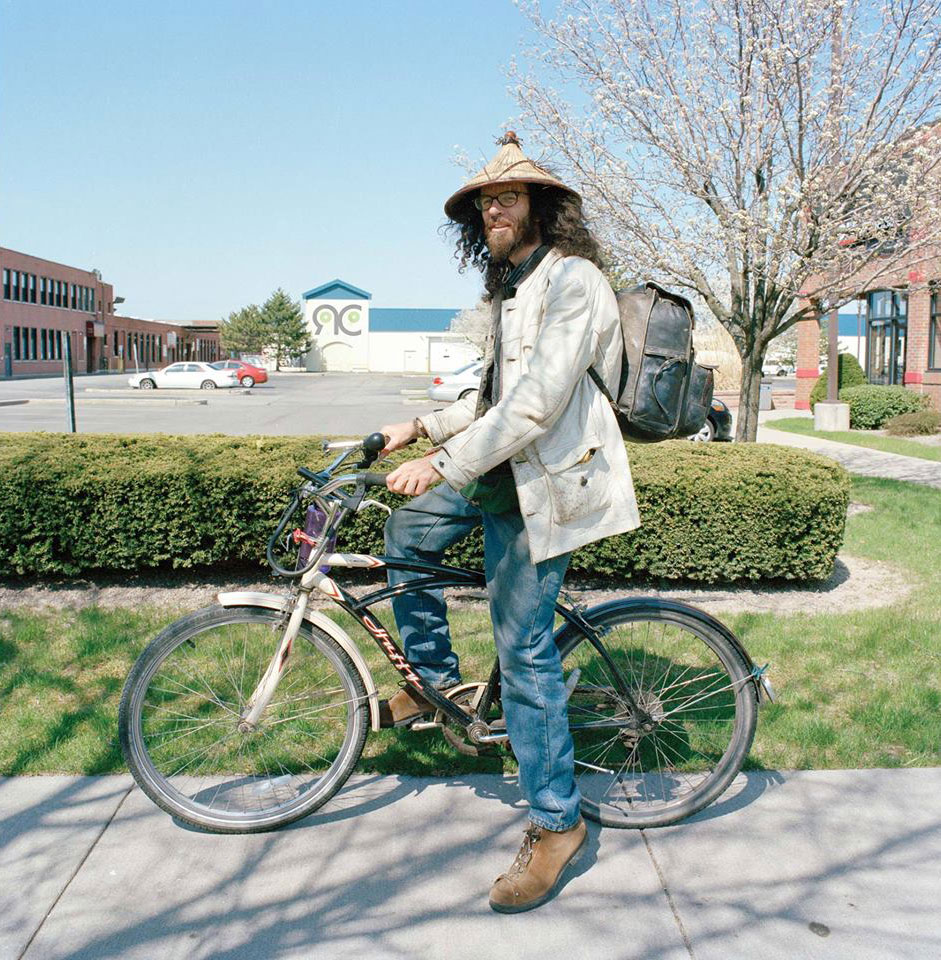
Posted by: Mike Governale, president and co-founder of Reconnect Rochester
Reconnect Rochester is proud to partner with Rochester Contemporary Art Center to bring you an exhibit focusing on bicycle history and culture in Rochester! Ride It: Art and Bicycles in Rochester will open on Friday, April 3…
Focus for a More Sustainable Long-Range Transportation Plan
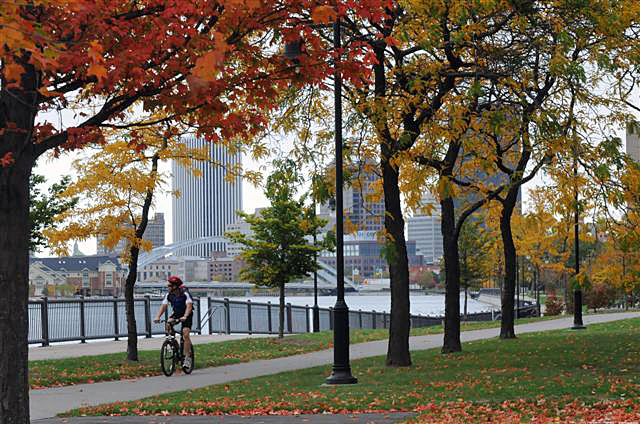
Posted by: Bob Williams, VP of Advocacy
We are often asked at Reconnect Rochester questions regarding who is responsible for prioritizing transportation projects in our region and the process through which that is accomplished. The answer leads back to the 1962 National Highway Act which required all urbanized areas of greater than 50,000 population to form a Metropolitan Planning Organization, or MPO, for the channeling of federal funding to both individual projects and transportation programs.
2014 the Safest Year to Be a Pedestrian in NYC Since 1910
![In June, the New York State legislature passed a bill to let NYC lower its default limit to 25mph. Lowering speed limits is part of Mayor Bill de Blasio's Vision Zero plan. [PHOTO: Michael Tapp, Flickr]](http://www.rochestersubway.com/images/photos/new-york-city-speed-limit-law-02.jpg)
Posted by: Renee Stetzer, pedestrian safety advocate and blogger at RocVille.com
This month marks the one year anniversary of New York City’s ambitious Vision Zero campaign ![]() , a plan to eliminate traffic fatalities by the year 2024.
, a plan to eliminate traffic fatalities by the year 2024.
As part of the effort ![]() , traffic calming and street design measures were implemented, bike lanes were expanded, speed cameras were installed in school zones, the citywide default speed limit was reduced to 25 mph, arterial slow zones were established, public education and awareness were ramped up and the NYPD significantly stepped up enforcement and ticketing for traffic violations. It’s an effort that requires all people, regardless of how they traverse those streets to rethink how they drive, walk and ride about their daily lives. It requires a shift in the culture of getting about in NYC, which is no easy task.
, traffic calming and street design measures were implemented, bike lanes were expanded, speed cameras were installed in school zones, the citywide default speed limit was reduced to 25 mph, arterial slow zones were established, public education and awareness were ramped up and the NYPD significantly stepped up enforcement and ticketing for traffic violations. It’s an effort that requires all people, regardless of how they traverse those streets to rethink how they drive, walk and ride about their daily lives. It requires a shift in the culture of getting about in NYC, which is no easy task.
So, one year later, is the campaign making a difference?
City Council Approves Additional Red Light Camera Study
![Do Red Light Cameras Make Rochester Streets Safer? [PHOTO: Yousuf Fahimuddin]](http://www.rochestersubway.com/images/photos/rochester-red-light-camera-03.jpg)
Posted by: Renee Stetzer, pedestrian safety advocate and blogger at RocVille.com
Last week, the City Council approved further study of Rochester’s red light camera program. This isn’t a brand new study, but an expansion of the study that was released in November. The results of that study indicated a reduction in the number of accidents at 22 intersections ![]() that have red light cameras. Two intersections had no changes in the collision rates before and after the cameras were installed. And 8 intersections had an increase in the number of collisions. Those 8 intersections are the subject of the expanded study, as well as whether the cameras could be tied into traffic signals to help reduce operation costs…
that have red light cameras. Two intersections had no changes in the collision rates before and after the cameras were installed. And 8 intersections had an increase in the number of collisions. Those 8 intersections are the subject of the expanded study, as well as whether the cameras could be tied into traffic signals to help reduce operation costs…
Parking Summit This Wednesday

Posted by: Mike Governale, president and co-founder of Reconnect Rochester
This Wednesday, 5:30 – 7:00pm at the Penthouse (1 East Avenue – 11th Floor) you are invited to attend a Downtown Parking Summit ![]() hosted by the City of Rochester. But this is not a meeting to discuss how we create more parking. We’ve tried that before, and it nearly killed our city.
hosted by the City of Rochester. But this is not a meeting to discuss how we create more parking. We’ve tried that before, and it nearly killed our city.
Reconnect Rochester recognizes the importance of having an adequate supply of downtown parking. However, we believe parking should be one component to a much larger, diverse plan to improve access to downtown…
City of Rochester Neighborhood Petition for Speed Limit Reduction
Added to our Cycling Resources page is a PDF containing the City of Rochester Neighborhood Petition for Speed Limit Reduction.
Download Form – Send completed form to Erik Frisch frische@cityofrochester.gov or mail to: Erik Frisch, Dept. of Environment Services, City of Rochester, 30 Church Street, Rochester NY, 14614
Rochester Extends Red Light Camera Program
![Rochester Extends Right Light Camera Program [PHOTO: Renee Stetzer]](http://www.rochestersubway.com/images/photos/rochester-red-light-camera-02.jpg)
Posted by: Renee Stetzer, pedestrian safety advocate and blogger at RocVille.com
Last night the City Council approved the extension of Rochester’s red light camera program until December 2019. The 6 to 3 vote was originally scheduled for September, but postponed when the results of the red light camera study were not yet available. The official report was released last week…
New Citywide 25MPH Speed Limit in NYC
![New Citywide 25MPH Speed Limit in NYC. [PHOTO: Vision Zero, NYC.gov]](http://www.reconnectrochester.org/images/photos/speed_limit_25.jpg)
Posted by: Renee Stetzer, pedestrian safety advocate and blogger at RocVille.com
New York City’s new lower citywide speed limit goes into effect today. In June the NY State legislature passed a bill that allowed NYC to lower its default speed limit to 25mph ![]() . Part of the city’s Vision Zero plan
. Part of the city’s Vision Zero plan ![]() to eliminate traffic fatalities, the new lower default speed limit was approved by the City Council in October and signed by Mayor Bill de Blasio last week. And the new 25mph signs are going up today…
to eliminate traffic fatalities, the new lower default speed limit was approved by the City Council in October and signed by Mayor Bill de Blasio last week. And the new 25mph signs are going up today…
City Council to Vote to Extend Red Light Camera Program
![Last week Governor Andrew Cuomo granted permission for several cities and counties in New York, including Rochester, to begin or continue red light camera programs until 2019. [PHOTO: FringeHog, Flickr]](http://www.rochestersubway.com/images/photos/rochester-red-light-camera-01.jpg)
Posted by: Renee Stetzer, pedestrian safety advocate and blogger at RocVille.com
The City Council will vote to extend the red light camera program on October 14th. Rochester began its program in 2010 and there are currently cameras installed at over 30 intersections. The city recently completed its second study on the impact the cameras have on traffic accidents at intersections with cameras. Although the official report is not yet available to the public, some draft findings were shared at a City Council meeting in August. Here are a few…
Read more
Can Lower City Speed Limits Make Streets Safer?
![In June, the New York State legislature passed a bill to let NYC lower its default limit to 25mph. Lowering speed limits is part of Mayor Bill de Blasio's Vision Zero plan. [PHOTO: Dmitry Gudkov, Flickr]](http://www.rochestersubway.com/images/photos/new-york-city-speed-limit-law-01.jpg)
Posted by: Renee Stetzer, pedestrian safety advocate and blogger at RocVille.com
All across the country, state legislatures are raising speed limits on roadways ![]() . I think the highest I’ve read about is a tollway in Texas, which is taking on the Autobahn with an 85 mph limit. Highways are getting faster it seems. New York City, however, has been pushing for the authority to lower speed limits on its streets. And in June, the New York State legislature passed a bill to let NYC lower its default limit to 25mph (from the default of 30 mph). Lowering default speed limits on its 6000 miles of roads is part of Mayor Bill de Blasio’s Vision Zero
. I think the highest I’ve read about is a tollway in Texas, which is taking on the Autobahn with an 85 mph limit. Highways are getting faster it seems. New York City, however, has been pushing for the authority to lower speed limits on its streets. And in June, the New York State legislature passed a bill to let NYC lower its default limit to 25mph (from the default of 30 mph). Lowering default speed limits on its 6000 miles of roads is part of Mayor Bill de Blasio’s Vision Zero ![]() plan to eliminate traffic fatalities by 2024…
plan to eliminate traffic fatalities by 2024…
Mount Read Boulevard Corridor Study: Public Meeting This Thursday

The City of Rochester, in partnership with the NY State Department of Transportation, Monroe County, Town of Greece, and Genesee Transportation Council, is leading an effort to develop a vision for improving Mount Read Boulevard ![]() from Buffalo Road (NYS Route 33) traffic circle to Stone Road.
from Buffalo Road (NYS Route 33) traffic circle to Stone Road.
If you use this section of Mt Read Blvd, either on foot, bike, car, truck, or public transit, you are invited to attend a public meeting this Thursday…
Rochester Bicycle Boulevards Public Meeting
![Bike Boulevard in Berkeley, CA [PHOTO: Artbandito]](http://www.rochestersubway.com/images/photos/bike-boulevard-berkeley-artbandito.jpg)
Rochester is planning a network of bicycle boulevards ![]() to connect destinations throughout the city and give residents a safer bike commute. The plan is being developed by the City of Rochester, in partnership with the New York State Department of Transportation, Monroe County, Rochester Cycling Alliance, and Genesee Transportation Council.
to connect destinations throughout the city and give residents a safer bike commute. The plan is being developed by the City of Rochester, in partnership with the New York State Department of Transportation, Monroe County, Rochester Cycling Alliance, and Genesee Transportation Council.
If you’d like to hear more about this project and provide input, please attend the first public meeting tomorrow:
Tuesday, Feb. 11 @ 6pm
Central Library of Rochester & Monroe County NY
Kate Gleason Auditorium
115 South Avenue ![]()
RCA Joins NYBC
The Rochester Cycling Alliance is now a member organization of the New York Bicycling Coalition. The NYBC advocates for pro-bicycle policies at the local, New York state and federal levels. They educate New Yorkers about the benefits of bicycling and walking, offer technical and training resources, assist bicycle advocates and government entities, and promote safe riding.

Join the Call for Safer Streets in Rochester

Last week the City of Rochester decided it would not move ahead with a planned road diet along Lake Avenue that many had hoped would improve safety for drivers, cyclists, pedestrians, and those who depend on bus service in the area. The Lake Avenue Improvement Project ![]() would have replaced two automobile lanes with a center turning lane and bike lanes. Due to pressure from the Charlotte neighborhood and merchants associations, city engineers will be sent back to the drawing board, ordered to keep all four auto lanes…
would have replaced two automobile lanes with a center turning lane and bike lanes. Due to pressure from the Charlotte neighborhood and merchants associations, city engineers will be sent back to the drawing board, ordered to keep all four auto lanes…
